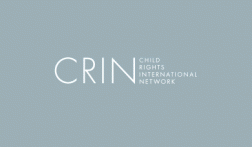Sometimes national justice systems do not provide human rights victims with the redress they need and deserve. This could be because the law itself violates human rights, remedies are inadequate or perhaps corruption levels are too high. Children are particularly vulnerable here because so often societies fail to view them as rights holders so justice is out of their reach.
This toolkit explains the international complaints mechanism for violations of the Convention on the Rights of the Child so you can help children bring violations of their rights to international attention.
The Committee on the Rights of the Child, which is the specific UN body that enforces the Convention on the Rights of Child, has always been able to review States’ compliance with the Convention. But 20 years after the Convention was passed and just about every country signed up to accept their duties under it, the Committee was still powerless to provide child victims with redress when governments violated their rights. The Optional Protocol to the UN Convention on the Rights of the Child on a communications procedure was adopted by the General Assembly in December 2011 and finally entered into force in April 2014.
The toolkit sets out the who, what, when, where, why and how of the complaints mechanism, so you can understand what the mechanism is designed for and if it is right for the specific children’s rights abuse you are dealing with. It is divided into three sections that correspond to the three ways complaints can be brought before the Committee - individual complaints, inquiries into serious or widespread violations, or inter-State complaints where one State can lodge a complaint against another. The toolkit also includes a plain language annotated version of Optional Protocol 3 to the Convention on the Rights on the Child (the legal instrument creating the complaints mechanism), as well as a helpful table laying out how all the different complaints mechanisms under different human rights treaties work.

